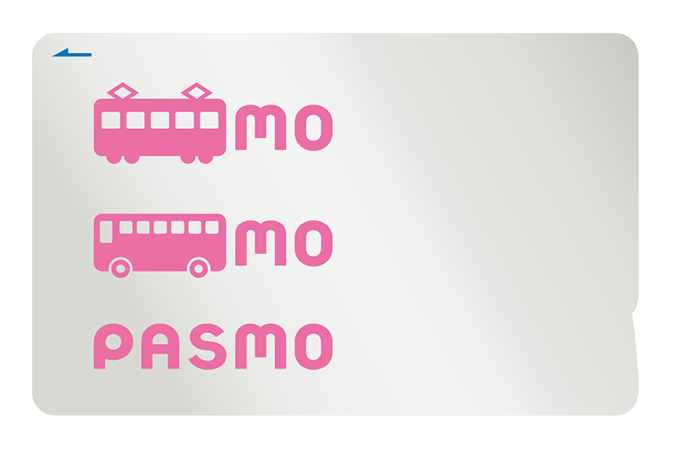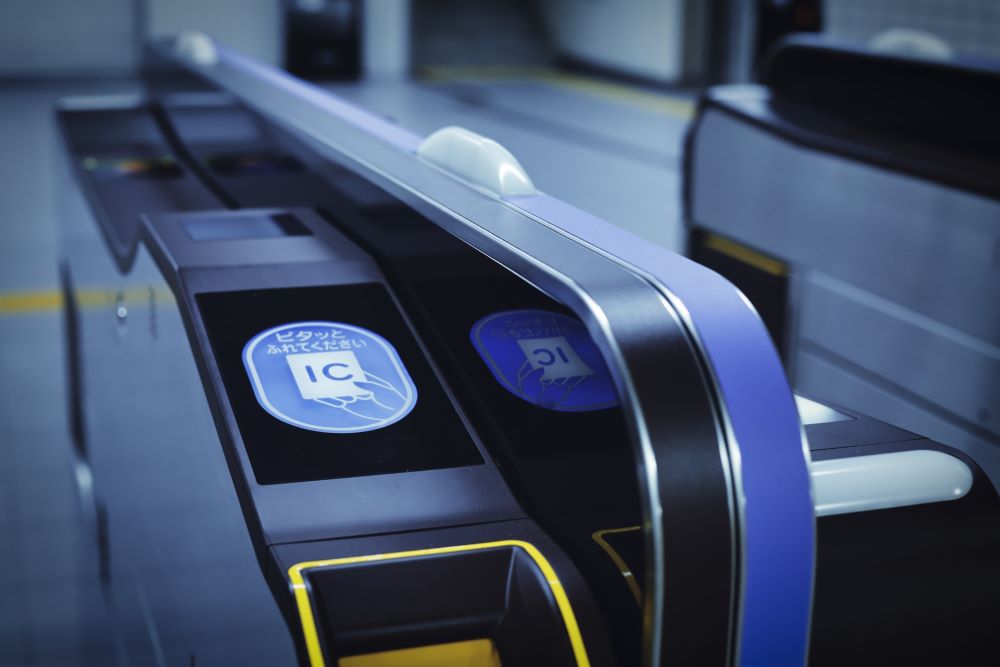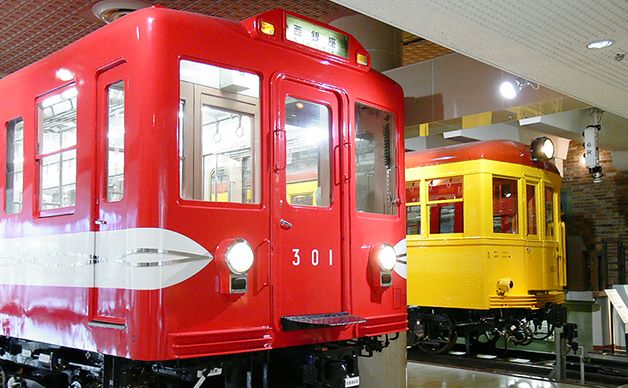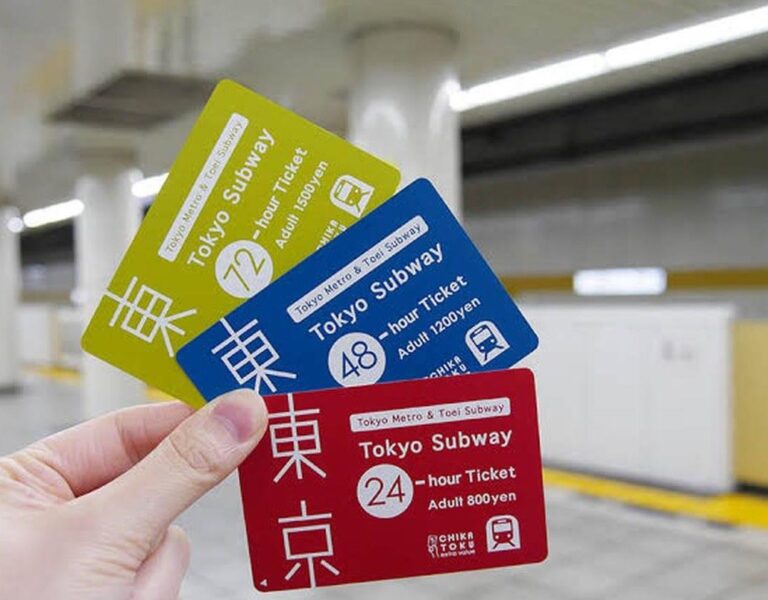IC cards have become an integral part of life in Japan for both locals and travelers, especially for those who use public transportation. These prepaid smart cards allow commuters to easily and efficiently pay for train, subway, and bus fares, as well as make purchases at vending machines, convenience stores, and other participating retailers.

Most major transportation companies in Japan offer their own version of the IC card, with the most popular being Suica and Pasmo in Tokyo, Icoca in Osaka, and Kitaca in Hokkaido. These cards can be purchased and recharged at train stations, subway stations, and convenience stores throughout the country.
Key Takeaways
- IC cards are prepaid smart cards used for public transportation and retail purchases in Japan.
- Suica and Pasmo are the most popular in Tokyo.
- Can be purchased and recharged at train stations, subway stations, and convenience stores.
- IC cards offer convenient and efficient payment options for commuters and travelers.
- Can be used at vending machines, convenience stores, and many (but not all) shops.
- Typically require a deposit of 500 to 1000 yen to create the card.
- Can be used across Japan so great for travelers’ public transportation
Types of IC Cards in Japan

IC cards, or Integrated Circuit Cards, are prepaid e-money cards that are widely used in Japan for public transportation and other services. Here’s a few of the most popular IC cards in Japan:
- Suica: Suica is one of the most widely used IC cards in Japan. It is primarily used for transportation on JR East trains, but can also be used on buses, subways, and even some taxis in Tokyo and other cities. Suica can also be used to make purchases at many convenience stores, vending machines, and other retailers.
- Pasmo: Pasmo is another popular IC card that is primarily used in the Tokyo metropolitan area. It can be used on most trains, subways, and buses in the area, as well as at many retailers and vending machines.
- Icoca: Icoca is a popular IC card used in western Japan, primarily on JR West trains. It can also be used on buses and subways in the area.
- Sugoca: Sugoca is an IC card used in the Kyushu region of Japan. It is primarily used on JR Kyushu trains, but can also be used on buses and subways in the area.
- PiTaPa: PiTaPa is an IC card used in the Kansai region of Japan, primarily on private railways and buses in the area.
Most IC cards in Japan can be used interchangeably, meaning that if you have a Suica card, for example, you can use it on trains and buses that accept Pasmo or Icoca as well. This makes it easy for travelers to use public transportation without having to worry about which card to buy.
Advantages of IC Cards in Japan

IC cards, such as Suica, Pasmo, and Icoca, offer numerous advantages to travelers and residents in Japan. The following are some of the benefits of using IC cards:
- Convenience: IC cards are incredibly convenient and easy to use. They can be used on almost all modes of public transportation, including trains, subways, buses, and even some taxis. You can also use them to make purchases at many vending machines and convenience stores.
- Time-Saving: IC cards can save you time by eliminating the need to buy tickets or figure out how much your fare will be. You simply tap your card at the gate or on the reader when you board a bus, and the fare is automatically deducted from your balance.
- Cost-Effective: If you plan on using public transportation frequently, IC cards can be more cost-effective than buying individual tickets. Many IC cards offer discounted fares, and you can also recharge your card with as much or as little money as you want.
- Flexibility: IC cards are not tied to a specific mode of transportation or company. For example, you can use a Suica card on both JR and non-JR trains, as well as on buses and subways. This flexibility makes it easy to travel around Japan without having to worry about buying different tickets or passes.
Overall, IC cards are an essential tool for anyone traveling or living in Japan. They offer convenience, time-saving, cost-effectiveness, and flexibility, making them a must-have for anyone looking to explore the country’s many attractions and destinations.
Usage of IC Cards in Japan

The cards are widely accepted in most major cities and can be used for trains, subways, buses, and even some taxis.
As covers the most popular IC cards in Japan are Suica, Pasmo, and Icoca, but there are many other regional cards available as well. Using an IC card is simple. Just tap the card on the reader at the ticket gate when entering and exiting a station.

The correct fare is automatically calculated and deducted from the card. IC cards can also be used to pay for purchases at some vending machines and convenience stores, as well as for other services like lockers and bicycle rentals.
One of the major benefits of using an IC card is convenience, especially when you are entering the station and trying to work out which ticket you need to buy. Instead of having to purchase a separate ticket for each ride, travelers can simply load money onto their card and use it for all their transportation needs.
The cards can also save travelers money, as some transportation companies offer discounted fares for IC card users. Note that IC cards are not interchangeable between different transportation companies.
For example, a Suica card cannot be used on Pasmo or Icoca systems. However, some transportation companies offer reciprocal use agreements, allowing travelers to use their IC card on multiple systems.
How much does an IC card cost?
The cost of purchasing an IC card varies depending on the region and the type of card. Generally, the price of an IC card ranges from ¥1,000 to ¥2,000. This includes a deposit of ¥500 to ¥1,000, which is refundable when you return the card, and the remaining balance is available for use. Some IC cards, such as Suica and Pasmo, do not have an expiration date, while others, such as Icoca, require a ¥220 renewal fee every ten years.
Can you use IC card on bus Tokyo?
Yes, you can use IC cards on buses in Tokyo. Most buses in Tokyo accept Suica and Pasmo, as well as other IC cards. To use an IC card on a bus, simply touch the card to the reader when you board and exit the bus. The fare will be automatically deducted from your card balance based on the distance traveled.
Can you use IC card for Tokyo Monorail?
Yes, you can use IC cards, such as Suica and Pasmo, on the Tokyo Monorail. Simply touch the card to the reader at the ticket gate to enter and exit the station. The fare will be automatically deducted from your card balance based on the distance traveled. However, keep in mind that some discount tickets, such as the Tokyo Monorail One-Day Pass, cannot be used with IC cards.
Can I pay for Shinkansen with IC card?
Yes, you can use IC cards to pay for Shinkansen tickets. Shinkansen tickets can be purchased separately at the ticket counter or through a ticket machine.
Which is better Suica or Pasmo?
Both Suica and Pasmo are widely accepted and function similarly. However, Suica is managed by JR East, while Pasmo is managed by non-JR Lines, including Tokyo Metro and Keikyu Electric Railway. Some people prefer Suica because it can also be used as a JR East train ticket, while others prefer Pasmo because it has a wider range of partner companies. Ultimately, the choice between Suica and Pasmo comes down to personal preference and which card is more convenient for your specific needs.
History of IC Cards in Japan
IC cards, or Integrated Circuit cards, were first introduced in Japan in 1998 on the Skyrail Midorizaka Line monorail in Hiroshima. However, it wasn’t until 2001 that IC cards became widely used as a method of payment for public transportation across Japan. Since then, dozens of train and bus operators have issued their own IC cards, including Suica, Pasmo, and Icoca.
The introduction of IC cards in Japan marked a significant shift in the way people paid for transportation. Before the introduction of IC cards, people had to purchase individual tickets for each ride, which could be time-consuming and inconvenient.
With the introduction of the cards, commuters could simply touch their card to a reader for about one second to pay for their fare. They quickly gained popularity in Japan due to their convenience and ease of use.
Over time, IC cards have also been accepted at many vending machines, convenience stores, restaurants, and shops, making them a versatile payment option for everyday purchases. Today, IC cards are an essential part of daily life for many Japanese people and visitors to Japan.
They have made traveling and making purchases more convenient and efficient, and continue to evolve with new features and payment options.
Challenges Faced by IC Cards in Japan
While IC cards have become a popular means of payment for public transportation and other services in Japan, they are not without their challenges.
One of the biggest challenges faced by IC cards in Japan is interoperability. While most IC cards can be used across different transportation systems and regions, there are still some regional differences in the types of cards accepted. This can lead to confusion for travelers and inconvenience for locals who may have to carry multiple IC cards.
Another challenge is the deposit required for some IC cards. For example, the regular Suica card requires a ¥500 deposit, which can be a barrier for some travelers who may not want to tie up that amount of money. However, the recently launched Welcome Suica card for tourists has no deposit, making it a more accessible option for short-term visitors.
There is also the issue of refunds for unused IC card balances. While it is possible to get a refund for the remaining balance on an IC card, the process can be complicated and time-consuming. Some travelers may not be aware of the refund process, or may not have enough time to go through the necessary steps before leaving Japan.
Finally, there are concerns about the privacy and security of IC cards. While IC cards do not contain personal information such as names or addresses, they do store data on the user’s travel history and spending habits. There have been cases of IC card data being hacked or leaked, raising concerns about the potential misuse of this information.
Despite these challenges, IC cards remain a popular and convenient means of payment for transportation and other services in Japan. As technology continues to evolve, IC cards will likely continue to adapt and improve to meet the needs of users.
Future of IC Cards in Japan
IC cards have become an essential part of public transportation in Japan, making travel more convenient and efficient. However, the future of IC cards in Japan is not limited to just transportation.
One potential development is the integration of IC cards with other services, such as payment systems for vending machines, convenience stores, and even restaurants.
This would allow users to make purchases with their IC cards, eliminating the need for cash or credit cards. Another possibility is the expansion of IC card usage beyond transportation and into other areas of daily life, such as access to buildings and events. Some universities in Japan have already implemented IC card systems for student identification and building access, and it is possible that this trend will continue to grow.
Furthermore, the development of next-generation IC cards is also underway. The new cards will feature enhanced security measures and improved functionality, such as the ability to store more data and connect with other devices.
One example of this is the Next-Gen Suica card, which is already in development and expected to be released in the near future. Overall, the future of IC cards in Japan is bright, with many exciting developments on the horizon.






